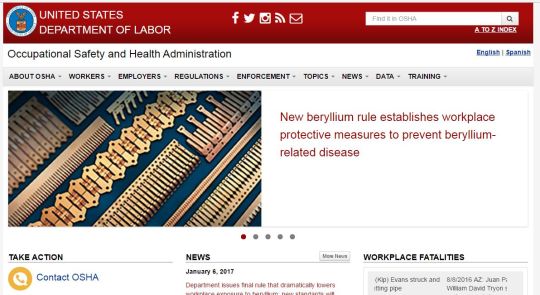Fast, Efficient, Free Online Training-How to create it and provide it to students. Utilizing an open source, cloud based learning management system (LMS), served on multiple platforms as a complement to and as standalone training.
Don't wanna be here? Send us removal request.
Link
0 notes
Link
0 notes
Link
0 notes
Conversation
First Talk: Ladder Safety
Job site example
Ryan was applying sheetrock mud to a wall and
was standing on the top rung of a 12-foot ladder.
He lost his balance, fell to the concrete floor,
and landed on his head. He suffered a major
head injury.
Ladders are involved in many incidents like this,
some of which are fatal. Your life literally can
depend on knowing how to inspect, use and care
for this tool. Let’s spend a few minutes talking
about ladders.
Inspecting ladders
Before using any ladder, inspect it. Look for the
following faults:
z Loose or missing rungs or cleats;
z Loose nails, bolts, screws;
z Wood splinters or damaged edges;
z Cracked, broken, split, dented, or badly worn
rungs, cleats, or side rails; and
z Corrosion of metal ladders or metal parts.
If you find a ladder in poor condition, tag the
ladder and take it out of service. If repairs are not
feasible, the defective ladder should be removed
from the job site.
Using ladders
Choose the right type and size ladder. Except
where stairways, ramps, or runways are
provided, use a ladder to go from one level to
another. Keep these points in mind:
1. Be sure straight ladders are long enough
so that the side rails extend above the top
support point, by at least 36 inches.
2. Don’t set up ladders in areas such as
doorways or walkways where others may
run into them, unless they are protected by
barriers. Keep the area around the top and
base of the ladder clear. Don’t run hoses,
extension cords, or ropes on a ladder and
create an obstruction.
3. Don’t try to increase the height of a ladder
by standing it on boxes, barrels or other
materials. Don’t try to splice two ladders
together.
4. Do not apply personal or job stickers/decals.
5. Set the ladder on solid footing against a solid
support. Don’t try to use a stepladder as a
straight ladder.
6. Place the base of straight ladders out away
from the wall or edge of the upper level
about 1 foot for every 4 feet of vertical
height. Don’t use ladders as a platform,
runway or scaffold.
ref:https://www.osha.gov/Publications/OSHA3666.pdf pg.5
2 notes
·
View notes


